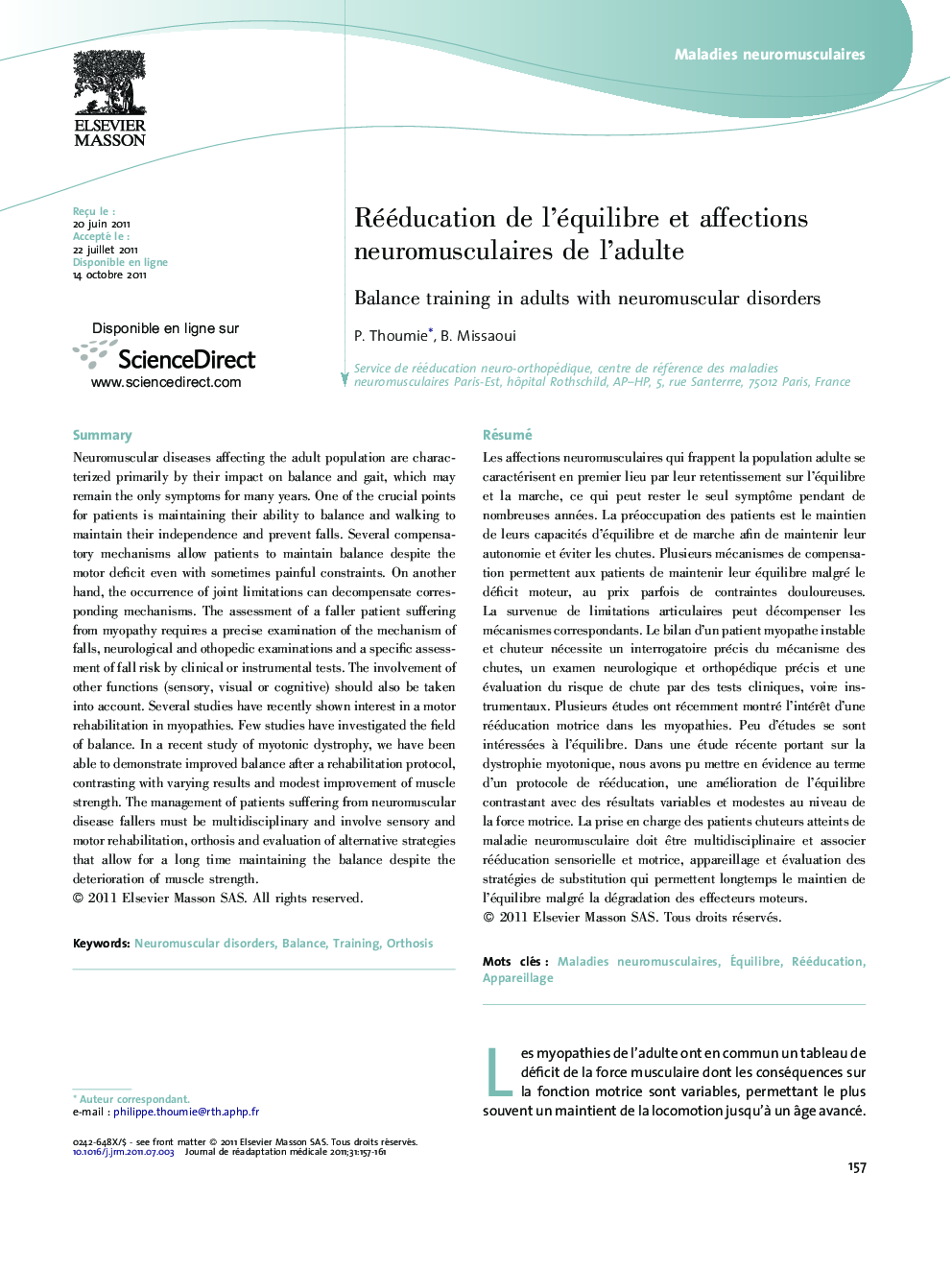| Article ID | Journal | Published Year | Pages | File Type |
|---|---|---|---|---|
| 2701058 | Journal de Réadaptation Médicale : Pratique et Formation en Médecine Physique et de Réadaptation | 2011 | 5 Pages |
Abstract
Neuromuscular diseases affecting the adult population are characterized primarily by their impact on balance and gait, which may remain the only symptoms for many years. One of the crucial points for patients is maintaining their ability to balance and walking to maintain their independence and prevent falls. Several compensatory mechanisms allow patients to maintain balance despite the motor deficit even with sometimes painful constraints. On another hand, the occurrence of joint limitations can decompensate corresponding mechanisms. The assessment of a faller patient suffering from myopathy requires a precise examination of the mechanism of falls, neurological and othopedic examinations and a specific assessment of fall risk by clinical or instrumental tests. The involvement of other functions (sensory, visual or cognitive) should also be taken into account. Several studies have recently shown interest in a motor rehabilitation in myopathies. Few studies have investigated the field of balance. In a recent study of myotonic dystrophy, we have been able to demonstrate improved balance after a rehabilitation protocol, contrasting with varying results and modest improvement of muscle strength. The management of patients suffering from neuromuscular disease fallers must be multidisciplinary and involve sensory and motor rehabilitation, orthosis and evaluation of alternative strategies that allow for a long time maintaining the balance despite the deterioration of muscle strength.
Keywords
Related Topics
Health Sciences
Medicine and Dentistry
Orthopedics, Sports Medicine and Rehabilitation
Authors
P. Thoumie, B. Missaoui,
